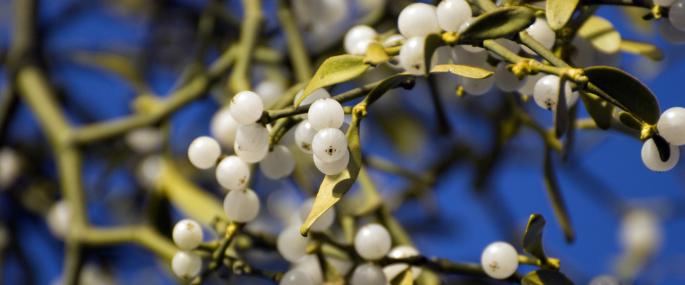One of our most practised Christmas traditions - kissing under the Mistletoe - comes from Victorian times when a boy could win a kiss from a girl for each Mistletoe berry he picked from his bunch. This game probably originated from a Norse legend in which the goddess Frigga declared Mistletoe a symbol of love. Floating in lifeless trees, growing from thin air… it’s easy to see how people thought Mistletoe was magical. In fact, Mistletoe is a parasite and gets most of its food from its host tree - it especially likes apple, lime and Hawthorn trees. Mistletoe berries are a favourite of birds such as Blackcaps; they eat the fat-rich pith but leave the seed attached to the branch, accidentally spreading the seeds and making it possible for a new plant to take root.
With the massive decline in traditional orchards over the past 60 years, Mistletoe has become rarer, struggling to find a foothold in its favoured areas. The Wildlife Trusts are working with other organisations on projects to help conserve our orchards and the wildlife they support; for example, many local Trusts look after traditional orchards, or are cultivating orchards, on working farm nature reserves. You can help Mistletoe to spread by growing it in your own garden - extract the seeds and sticky juice from the berries of a cutting and wipe them on a young branch of a suitable tree such as an apple. To find out more about gardening for wildlife visit our Wild About Gardens website.
